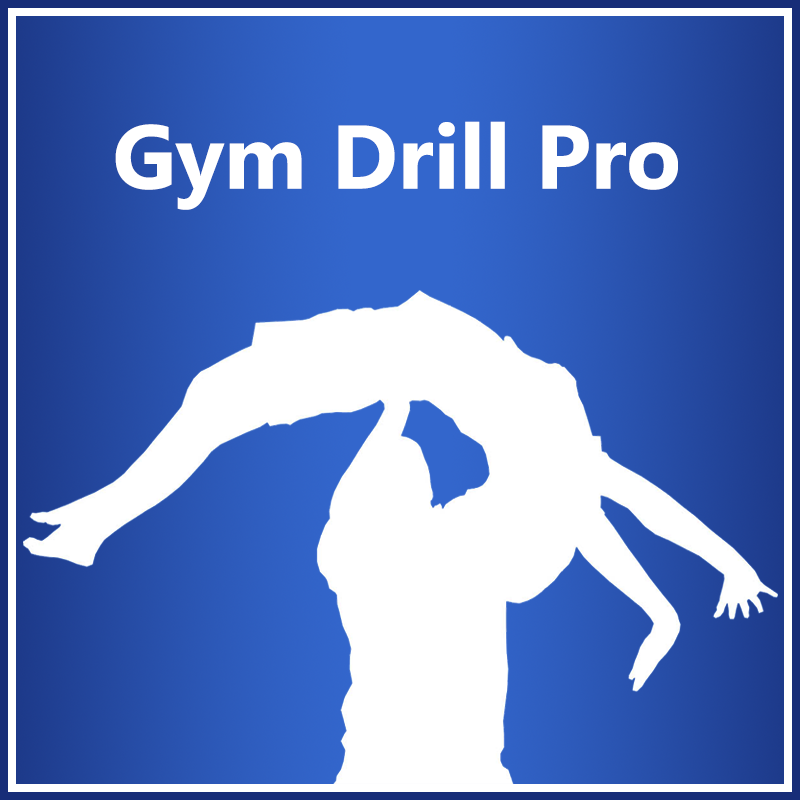

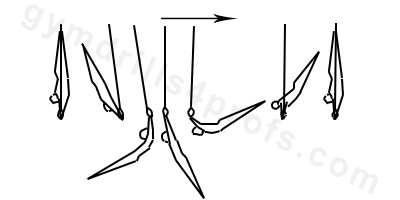
The gymnast should start in a properly executed ring handstand. The gymnast should begin the bail by leaning their heels forward, away from the vertical. They should then push the rings in the opposite direction while maintaining straight arms. They should keep tension on the rings to avoid having a shoulder angle. This will keep the bail long and allow for a higher backswing. Having a hollow body will help the gymnast maintain this pressure on the rings. The gymnast should keep this hollow body throughout the first portion of the bail, this will ensure a smoother swing. The gymnast should then have a strong heel drive and pressure on the rings as they raise their body in the backswing. The gymnast can either keep their arms parallel or widen them as they raise their body to the handstand position. Before attempting this skill, the gymnast should have a strong handstand, swing, and ideally be able to perform inlocates at ring height or higher. Meeting these criteria first will make the front giant much easier.
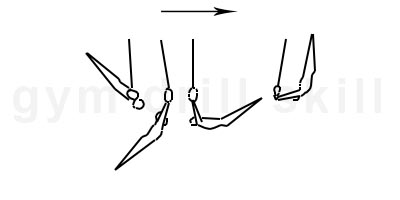
At the highest point in the back swing, the shoulders should be extended with the rings going slightly sideways. The body should be in an arched position. From the top of the swing, continuous shoulder extension toward the bottom of the swing must be maintained. This helps the gymnast maintain the arched body position until the bottom of the swing. At the bottom, the gymnast should kick the legs forward and upward to make their entire body turn over as fast as possible. The gymnast should attempt to kick from their upper chest at the bottom. Shoulder should remain extended and stay down until the entire body turns over completely. The rings should be pushed backward when the gymnast’s feet are pointed towards the ceiling. The rings should turn parallel (wrists facing one another). The rings should not go sideways during this portion of the swing. The final position is a higher point of the front swing, where the body should be in a slight hollow position with arms tight and parallel. The head should be neutral with the gymnast maintaining backward pressure on the rings. From the highest point of the front swing starts the backswing. The body should swing down in a hollow position without losing pressure on the rings. At the bottom, the gymnast should initiate a strong kick off their heels. During the turnover phase, the head should stay down to facilitate a stronger heel lift. Shoulders should remain low. When their heels have risen and their toes are directed upward toward the ceiling, the rings can be slightly open, the head will be slightly elevated as well. The final position of the backswing is arched. VERY IMPORTANT: In the backswing, do not pull down on the rings. The leading motion of the move is the kick back with the heels.
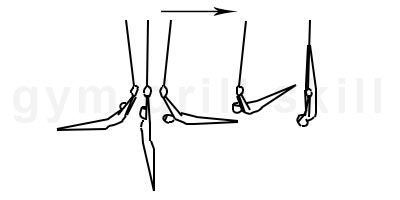
At the highest point in the back swing, the shoulders should be extended with the rings going slightly sideways. The body should be in an arched position. From the top of the swing, continuous shoulder extension toward the bottom of the swing must be maintained. This helps the gymnast maintain the arched body position until the bottom of the swing. At the bottom, the gymnast should kick the legs forward and upward to make their entire body turn over as fast as possible. The gymnast should attempt to kick from their upper chest at the bottom. Shoulder should remain extended and stay down until the entire body turns over completely. The rings should be pushed backward when the gymnast’s feet are pointed towards the ceiling. The rings should turn parallel (wrists facing one another). The rings should not go sideways during this portion of the swing. The final position is a higher point of the front swing, where the body should be in a slight hollow position with arms tight and parallel. The head should be neutral with the gymnast maintaining backward pressure on the rings. From the highest point of the front swing starts the backswing. The body should swing down in a hollow position without losing pressure on the rings. At the bottom, the gymnast should initiate a strong kick off their heels. During the turnover phase, the head should stay down to facilitate a stronger heel lift. Shoulders should remain low. When their heels have risen and their toes are directed upward toward the ceiling, the rings can be slightly open, the head will be slightly elevated as well. The final position of the backswing is arched. VERY IMPORTANT: In the backswing, do not pull down on the rings. The leading motion of the move is the kick back with the heels.
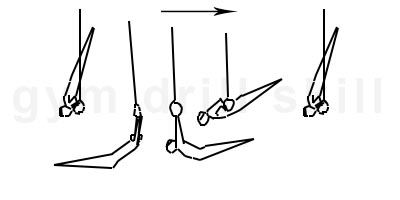
The forward baby giant is usually learned prior to attempting a full giant swing. This skill helps the gymnast understand how to push down on the rings and increase the amplitude of the swings. It also helps the athlete learn to bail in a hollow body and maintain backward pressure on the rings. These concepts are important so that the gymnast gets a full range of motion through the bottom of the swing. The skill begins in a shoulder stand. As the gymnast falls back, the arms push down on the rings in order to create a bigger half circle down to the lower vertical. The body is straight and slightly extended. In the back swing, the legs should raise into vertical. The most important move is the “heel drive”. The arms should be parallel and gradually bend while pushing down on the rings. This allows the shoulders to raise at the level of the rings. The skill finishes in a shoulder stand position. During the move the head should be slightly open.
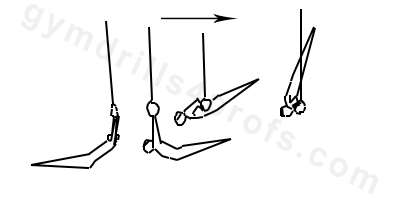
The drill is a modification of the previous one. Instead of performing it from shoulderstand, the gymnast should perform the baby giant from an inlocate or a couple of inlocates. Each successive inlocate should be higher than the previous one.
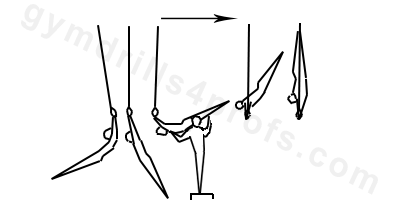
The drill should be performed with straps attached to the rings. The coach spots the gymnast. Each successive inlocate should be higher than the previous one until the gymnast reaches handstand. The arms have to be tight.
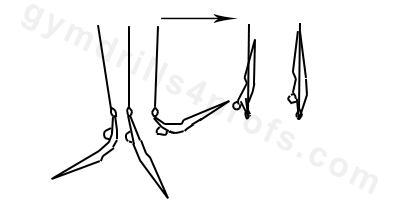
This drill should be done with a spotter in the beginning. Similar to the previous drills, the gymnast should perform a few inlocates, increasing the height of each one. The gymnast should then attempt to raise themselves into a handstand.
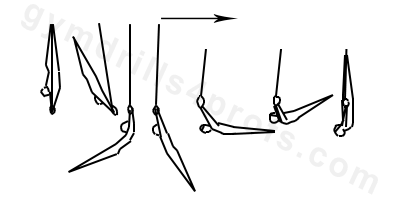
The goal of the drill is to get familiar with the handstand bail in connection with backward swing skills. In this drill, the gymnast should improve the bail and follow it with inlocates. During the bail the body should be straight and well extended. The gymnast should push the rings backward in order to prevent shoulder angle. The following inlocates should gradually increase in height.
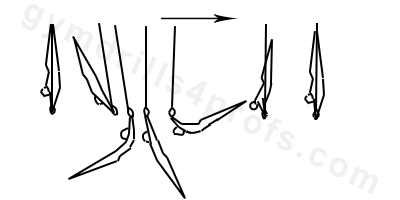
This drill connects the previous two drills. The gymnast should perform a front giant with bent arms. The athlete should emphasize on maintaining a straight body during the bail. They should also focus on preventing a shoulder angle. During the backswing, the shoulders should be extended and the heels should kick back strongly.

The drill can be done in the beginning with a spotter. Initially, it may be hard to perform the front giant handstand with tight arms. This is why the gymnast should hook their feet on the cables for assistance.
Integral part of gymnastics coaching process are skill drills. They help gymnasts to learn easier and technically correct. With GYM DRILL PRO you will find variety of ideas for the most the basic gymnastics skills. There are plenty of images with skill drill progressions. It is intended to support explicitly the qualified coaches in their daily coaching business. DO NOT practice without the guidance of proper professionals.